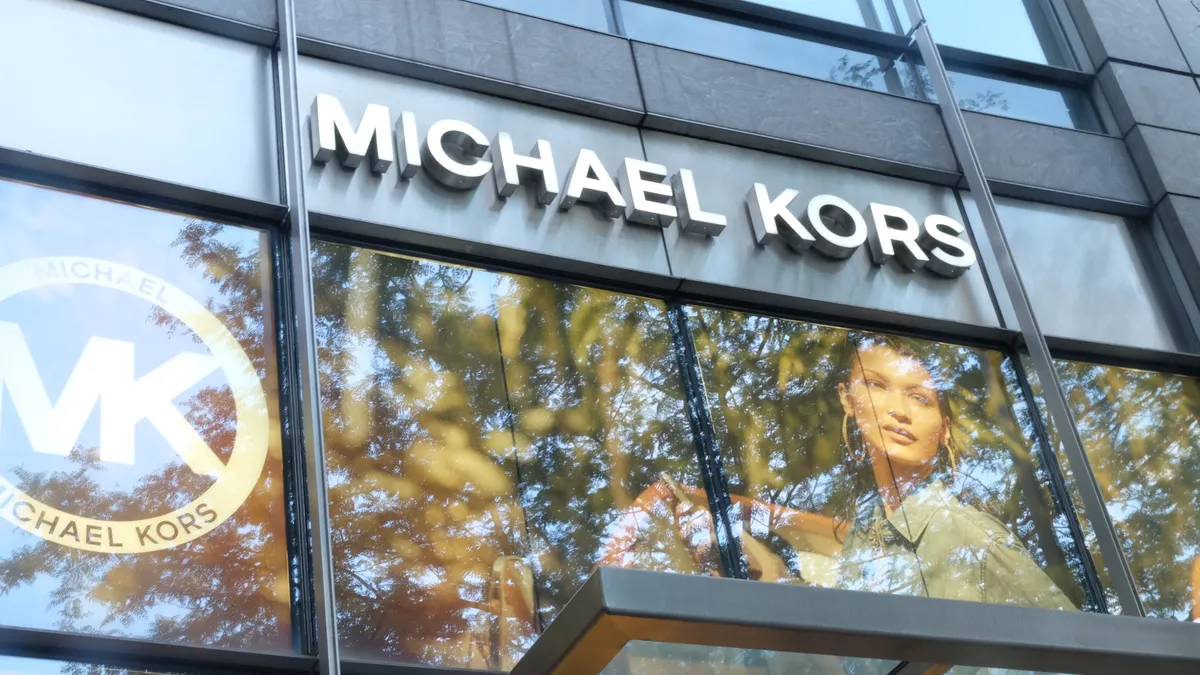Dive Brief:
-
Younger consumers are connecting with all three of Capri Holding's brands – Jimmy Choo and Versace as well as Michael Kors – at stores and not just online, executives told analysts on Wednesday.
-
The fashion conglomerate attracted new customers in its third quarter, they said. Revenue rose 24% year over year to $1.6 billion and net income rose 80% to $322 million, according to a company press release.
-
Michael Kors was Capri's weakest link, but joined its siblings in demonstrating sales strength. Versace revenue rose 29%, with operating income more than doubling; Jimmy Choo revenue rose 47%, with operating income swinging to $16 million from last year's $8 million loss; and Michael Kors revenue rose 20%, with operating income reaching $335 million from $281 million last year.
Dive Insight:
Michael Kors may need some extra attention at Capri, but even the company's lowest performing brand beat many analysts' expectations in several measures, including topline sales.
"Much of Capri's success came against a backdrop of robust consumer spending with shoppers eager to treat themselves to luxury clothing, accessories and footwear during the holiday period as they socialized more," GlobalData Managing Director Neil Saunders said in a Feb. 2 research note. "Gift buying was also elevated with high-end apparel featuring on the gift lists of more consumers than in the prior year. All of Capri's labels benefitted from this trend, but as has been the case for a long time, some benefitted more than others."
Executives also noted that consumer confidence was evident during the holiday quarter and said they expect that to continue. They outlined bold steps for the current fiscal year, especially at Versace where plans include expanding the footprint to 300 stores (from 212 as of December) and raising prices.
The Italian brand was already showing promise among younger consumers when Capri (then still named Michael Kors) snapped it up for more than $2 billion in 2018, while Michael Kors itself was grappling with some of the same problems dogging it now, including — as Saunders describes it — ubiquity and lack of focus. The brand has some strengths, including its MKGO activewear collection and accessories, but overall its Q3 performance was "a little disappointing in the context of a retail market that was on fire at the back end of 2021," Saunders said.
"It is very clear what Jimmy Choo and Versace stand for; it is much more difficult to discern the essence of Michael Kors," Saunders said. "In our view, the brand needs to work much harder at carving out a distinct positioning."
In its Q3 presentation, Capri said Michael Kors' initiatives include growing MKGO and its men's business to $500 million each. Joshua Schulman, who once led Coach and also worked at Neiman Marcus Group, took over at Michael Kors in August, and likely aims to turn the brand around before he takes the reins at Capri itself later this year.
Michael Kors is already fetching higher prices, even in North America where promotions are usually more frequent, Schulman said. The goal is to return the brand to its previous glory of in-demand handbags and sought-after designs, executives said. That will be a long haul, one that could be easily interrupted if consumer enthusiasm wanes, Saunders warned.
"[W]e believe there is a long way to go before the brand has a much clearer proposition," he said. "We are also slightly nervous about any economic tightening among consumers as this is likely to impact Michael Kors more than any of Capri's other labels."















